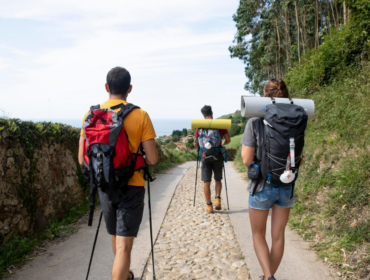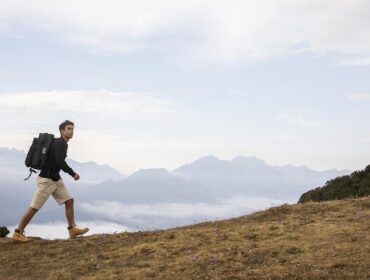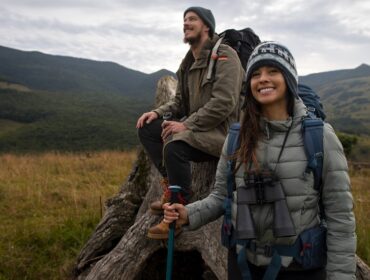There’s something magical about high altitude hiking. Towering peaks, crisp air, and panoramic views make it an experience like no other. But let’s be real—hiking above 10,000 feet is no joke. If you don’t prepare, your dream trek could turn into a dizzying, lung-burning struggle. High-altitude hiking demands physical endurance, mental grit, and a strategic training plan to ensure you’re not gasping for air before you even hit the first summit.
If you’re wondering how to prepare for high-altitude hiking, you’ve come to the right place. Whether you’re tackling Colorado’s 14ers, heading to the Andes or braving the Himalayas, the right training can make all the difference. Let’s break it down so you can hit the trail strong and enjoy every breathtaking (literally) moment.
Building Strength, Stamina and Lung Power for High Altitude Hiking
You don’t have to live in the mountains to train for them. Even if you’re stuck at sea level, you can condition your body for the thin air of high-altitude hikes. The key? A mix of endurance training, strength workouts, and breathing exercises.
Start with cardio. Running, cycling, and swimming are great, but hiking-specific endurance is even better. Load up your backpack and hit some steep trails—or if you don’t have mountains nearby, use a treadmill at an incline. Stair climbing is another secret weapon. Got a high-rise nearby? Those stairs will become your best friend.
Leg strength is crucial, so squats, lunges, and step-ups should be part of your routine. You’ll also want to engage your core and upper body—especially your back and shoulders—to support the weight of your pack.
And don’t overlook breathing. High-altitude training for first-time hikers often overlooks this, but learning how to breathe efficiently can make a world of difference. Try deep diaphragmatic breathing exercises and even practice breathing through your nose while working out. This helps train your lungs to function more efficiently in low-oxygen environments.
Preparing Your Body for the Thin Air
If only we could all wake up one morning and be perfectly adjusted to 12,000 feet. But our bodies need time to adapt, and acclimatization is key to avoiding altitude sickness.
One of the best strategies is to arrive at your hiking destination a few days early. Spend time at a moderate elevation—say 8,000 feet—before pushing higher. This allows your body to increase red blood cell production and adjust to lower oxygen levels.
If your trek involves multiple days, hike up to a higher elevation during the day, but descend a bit to sleep at night. This helps your body adjust without overloading it.
Hydration plays a massive role in acclimatization. The dry mountain air dehydrates you faster than you realize, so drink water constantly. And no, beer doesn’t count (as much as we’d love it to). Alcohol can worsen altitude symptoms, so save that celebratory drink for after your trek.
Most importantly, listen to your body. If you start feeling dizzy, nauseous, or have a pounding headache, it’s a sign you need to slow down. Pushing through altitude sickness can be dangerous. The mountains will still be there tomorrow—so take your time.
Fueling Your Body for the Climb
Think of your body like a high-performance engine. You wouldn’t put cheap fuel in a Ferrari, right? The same goes for high-altitude hiking—your diet matters.
Carbohydrates are your best friend at altitude. Your body burns through them faster in low-oxygen conditions, so load up on complex carbs like whole grains, quinoa, and oatmeal. Protein is also crucial for muscle recovery, so pack in some nuts, jerky and protein bars.
Hydration is even more important than you think. At high elevations, you lose water with every breath, so drink more than usual. If you’re thirsty, you’re already behind. Electrolytes help too—bring electrolyte tablets or sports drinks to keep your minerals balanced.
And don’t forget about iron-rich foods. Iron helps your body produce red blood cells, which are essential for carrying oxygen. Leafy greens, lean meats, and legumes can help boost your endurance at altitude.
Best Gear & Equipment for High Altitude Hiking
1. Winter Jacket

The right gear can make or break your adventure. When you’re hiking at high altitudes, conditions can change in an instant—one minute you’re basking in the sun, the next you’re battling wind and freezing temperatures. That’s why layering is essential. A moisture-wicking base layer keeps sweat from turning into an icy chill. The North Face Junction Insulated Jacket for Men and North Face Junction Insulated Jacket for Woman offers exactly what you need. With Heatseeker Eco insulation, it traps warmth efficiently without adding bulk. The Non-PFC DWR finish repels moisture, ensuring you stay dry in unexpected rain or snow. Since it’s made from 100% recycled body fabric, it’s a smart choice for both performance and sustainability. The secure-zip hand pockets keep essentials safe, while the standard fit ensures comfort throughout the day.
2. Winter Boots

Footwear matters just as much. A high-altitude hike often involves unpredictable terrain, from loose rock to icy patches. Your boots should be waterproof, sturdy, and well-cushioned for long treks. The Sorel Ona RMX Glacy Plus Waterproof Boots for Women provide peak waterproof functionality, ensuring your feet stay dry no matter the conditions. Inside, the microfleece lining adds a layer of warmth, while the removable EVA footbed offers excellent cushioning. The durable rubber outsole grips uneven surfaces, giving you confidence with every step. For men tackling the same rough landscapes, the Muck Chore Farm Leather Lace CT-MED Boots for Men are a tough, reliable option. With 100% waterproof protection and farmwork leather durability, these boots can handle wet, muddy, and rocky paths with ease.
3. Trekking Poles

A good pair of trekking poles can be a game-changer, reducing the impact on your knees and providing stability on steep ascents and descents. The Black Diamond Trail Back Trekking Poles are built with 7075 aluminum shafts, making them lightweight yet incredibly strong. The EVA foam grip ensures comfort on long treks, while the FlickLock adjustability system allows you to fine-tune the height depending on the terrain.
4. Sunglasses

At high elevations, the sun becomes more intense, and the glare can be overwhelming. Salt Life Tribeca Sunglasses are a must-have for reducing harsh reflections, thanks to their polarized lenses. They also provide UVA and UVB protection, shielding your eyes from harmful rays that are stronger at altitude. The five-layer anti-glare coating enhances visibility, making sure you can clearly see every ridge and valley ahead. The Dive Shades St. Lucia II Polarized Sunglasses offer 100% UV protection, shielding your eyes from harmful rays. Their polarized lenses cut down on glare, ensuring you have clear, strain-free vision even in bright conditions. The durable polycarbonate frames hold up against rough outdoor use, and the gray lenses provide a natural color balance for better visibility.
5. First Aid Case

Lastly, safety should never be overlooked. A well-prepared hiker always carries an emergency first aid kit, and the Nanuk 915 First Aid Case is built to handle any situation. Its virtually indestructible design ensures that medical supplies stay protected, even in the toughest conditions. The exclusive PowerClaw latching system provides a secure seal, keeping everything in place even during rough transport. With a soft ergonomic handle, it’s easy to carry, and the pressure release valve and bezel system help maintain optimal conditions inside, no matter the altitude.
Final Thoughts
High-altitude hiking is an unforgettable experience, but only if you prepare properly. Train hard, acclimate wisely, fuel your body, and bring the right gear. The mountains can be tough, but with the right preparation, you’ll be tougher.
So, lace up those boots, start training, and get ready to conquer the heights. The peaks are calling—are you ready to answer?
FAQs
How do I train for high-altitude hiking at sea level?
If you can’t train at elevation, focus on endurance, leg strength, and breathing techniques. Running, stair climbing, and hiking with a weighted pack will prepare your body for the challenge.
How long does it take to acclimate to high altitudes?
It depends on the altitude and the individual, but most people need at least 2-3 days at moderate elevations before pushing higher.
What are the best hiking tips for altitudes above 12,000 feet?
Hydrate constantly, eat plenty of carbs, pace yourself, and don’t ignore altitude sickness symptoms. Climb high, sleep low, and let your body adjust gradually.
How can I breathe better at high altitude?
Practice deep, slow breaths. Diaphragmatic breathing and nose breathing while training can help strengthen your lungs.
What are the signs of altitude sickness?
Headaches, dizziness, nausea, loss of appetite, and difficulty sleeping are common. If symptoms worsen, descend immediately.





